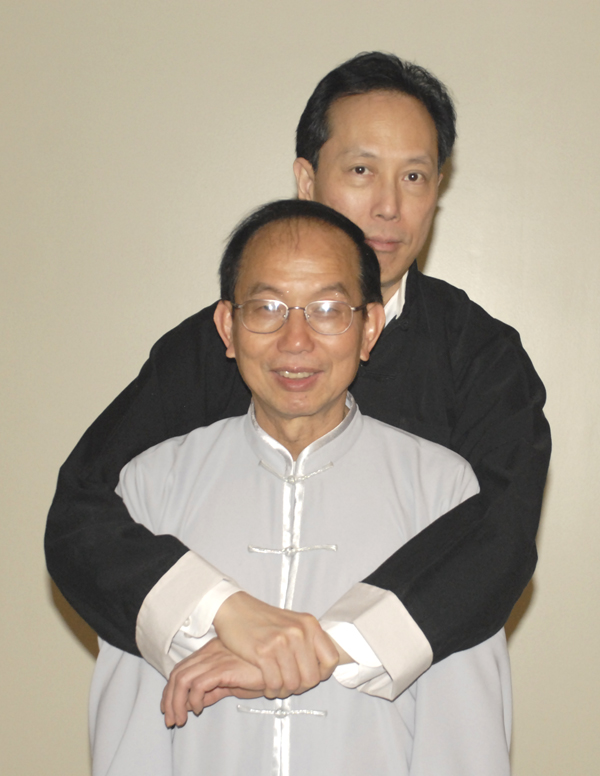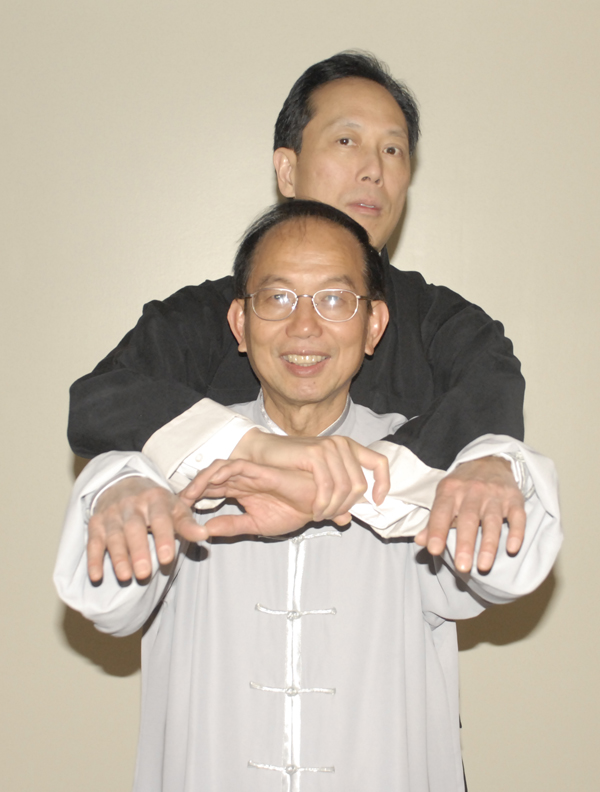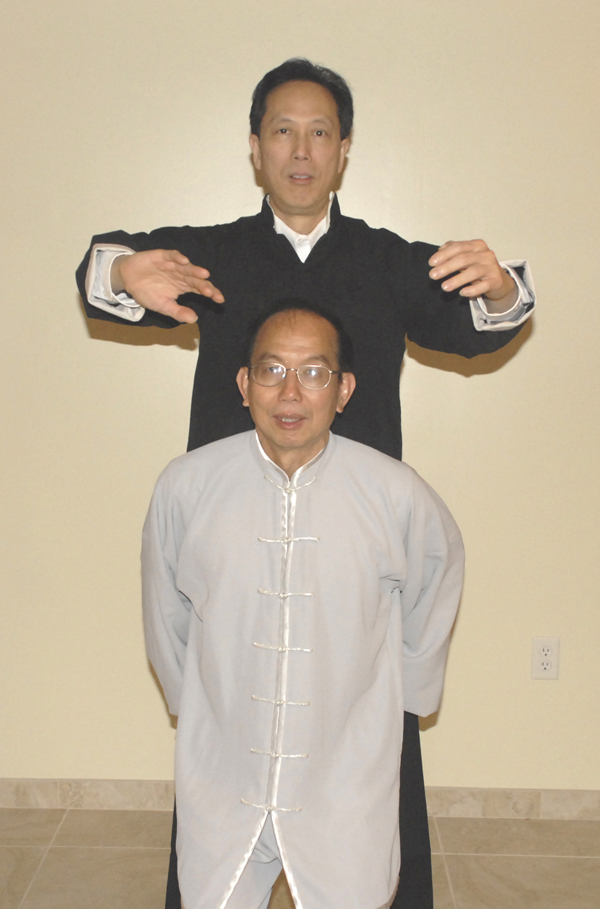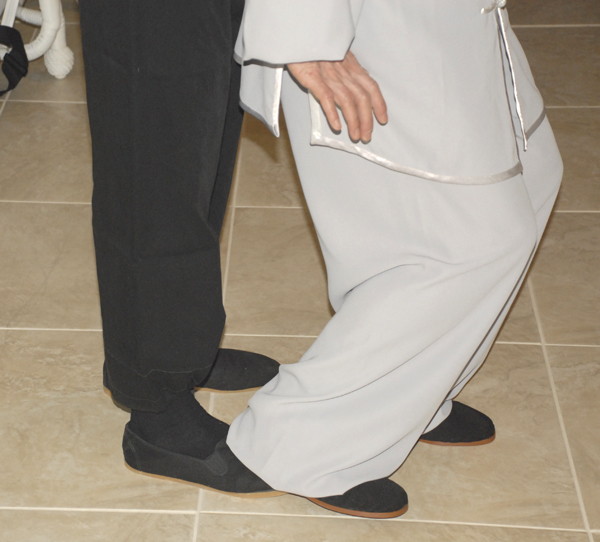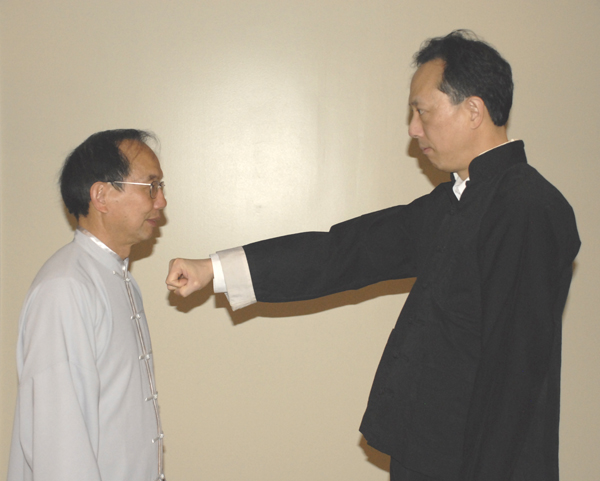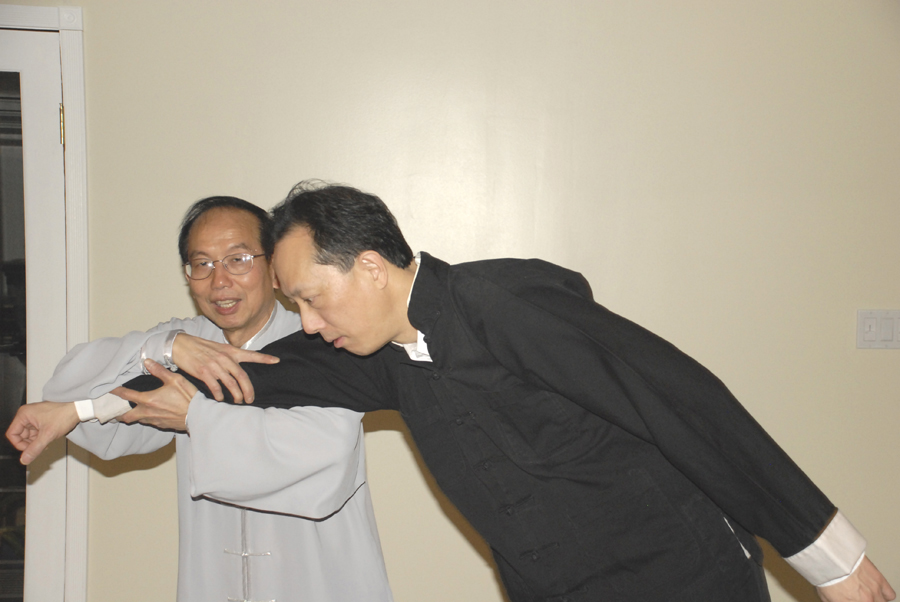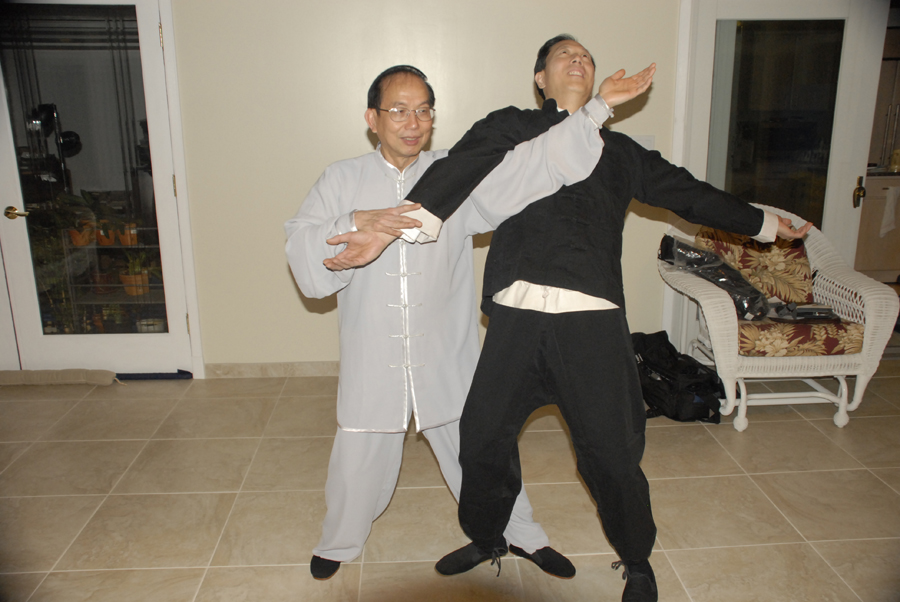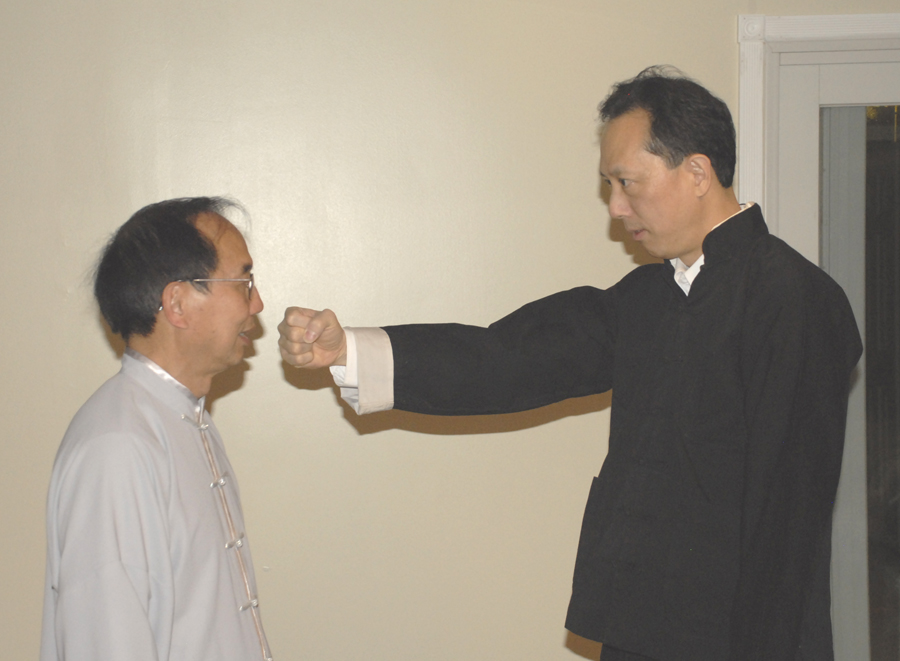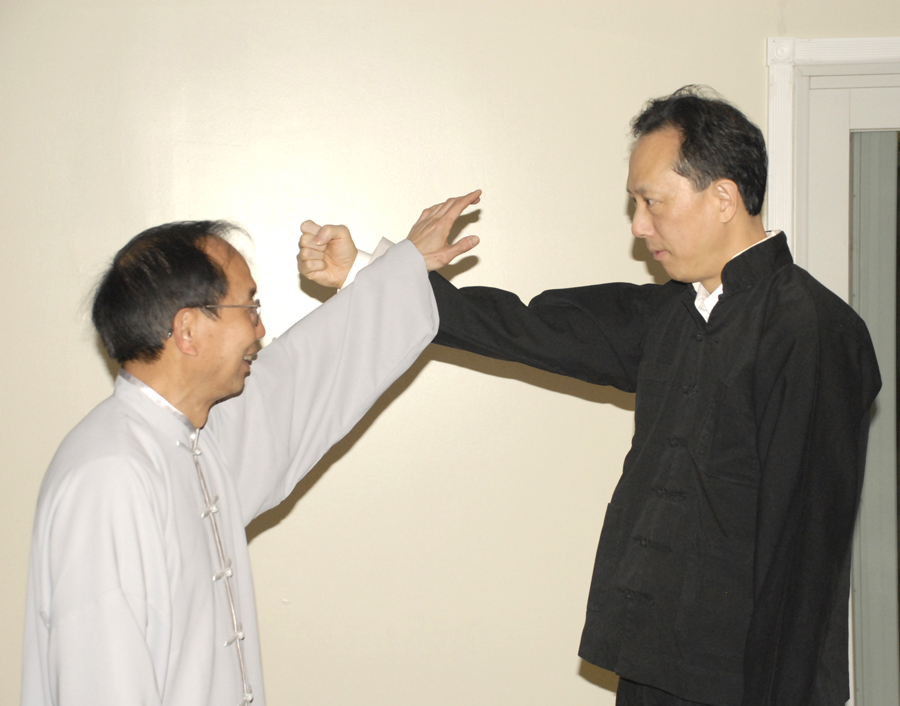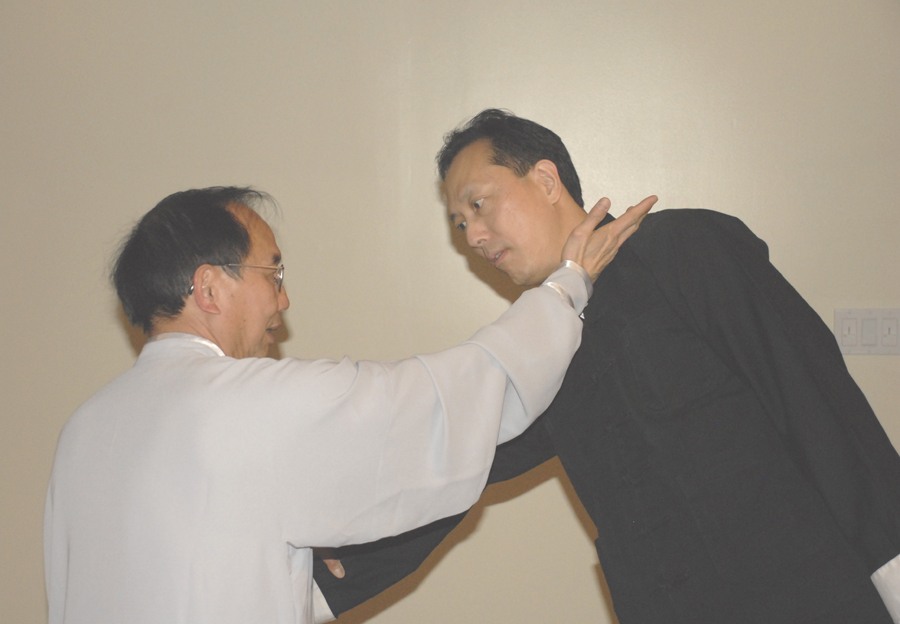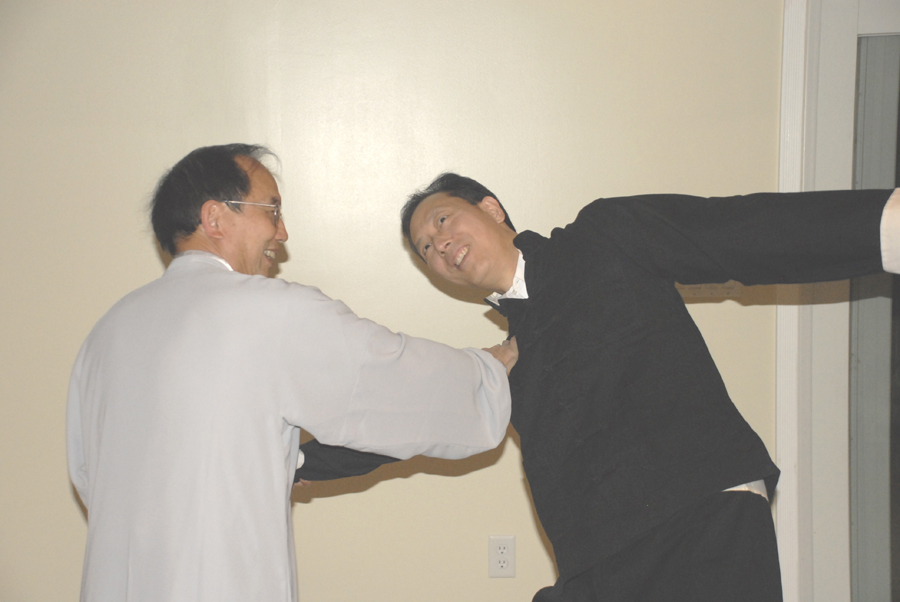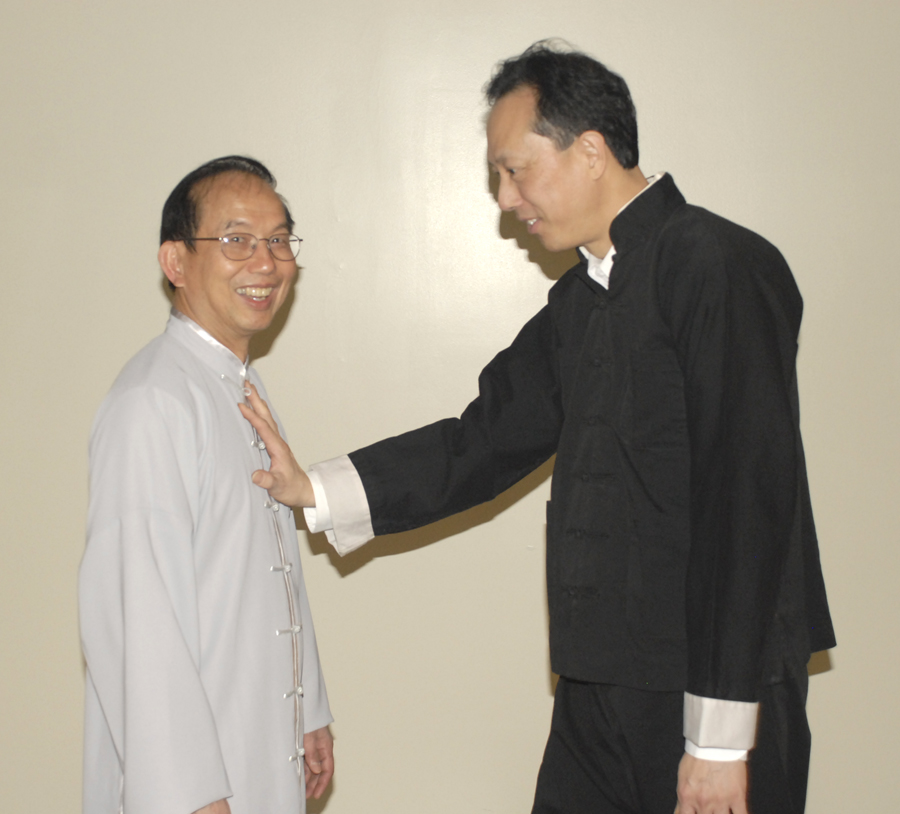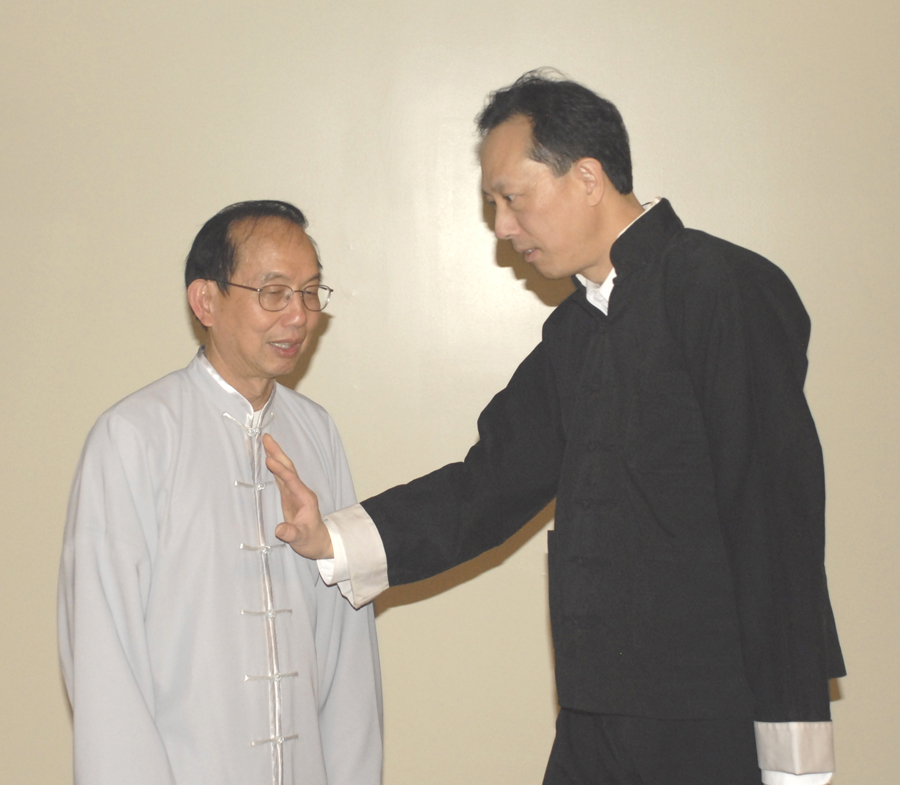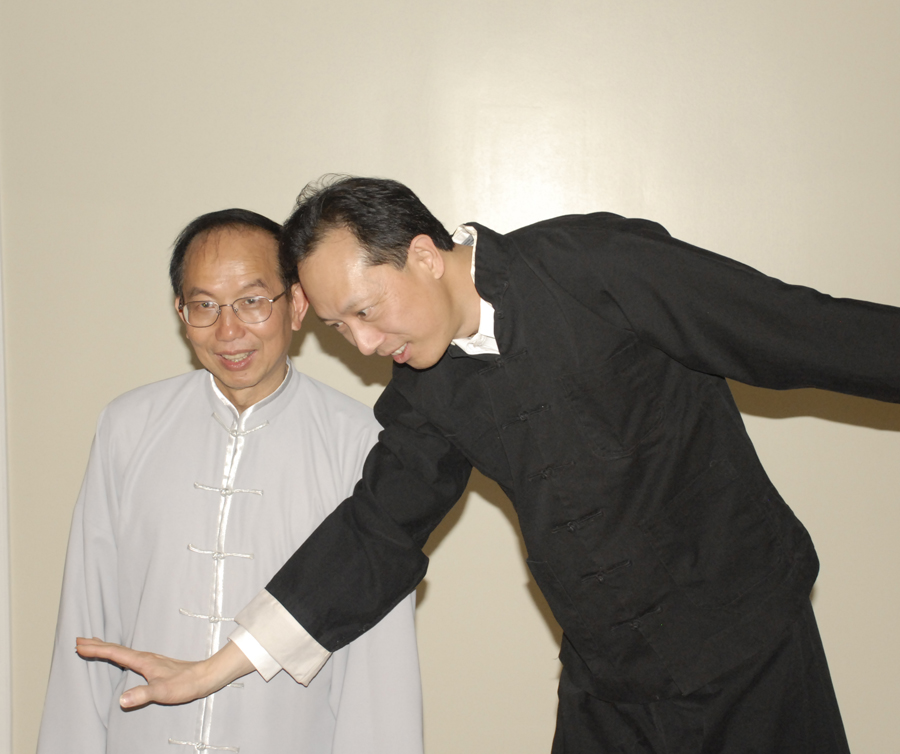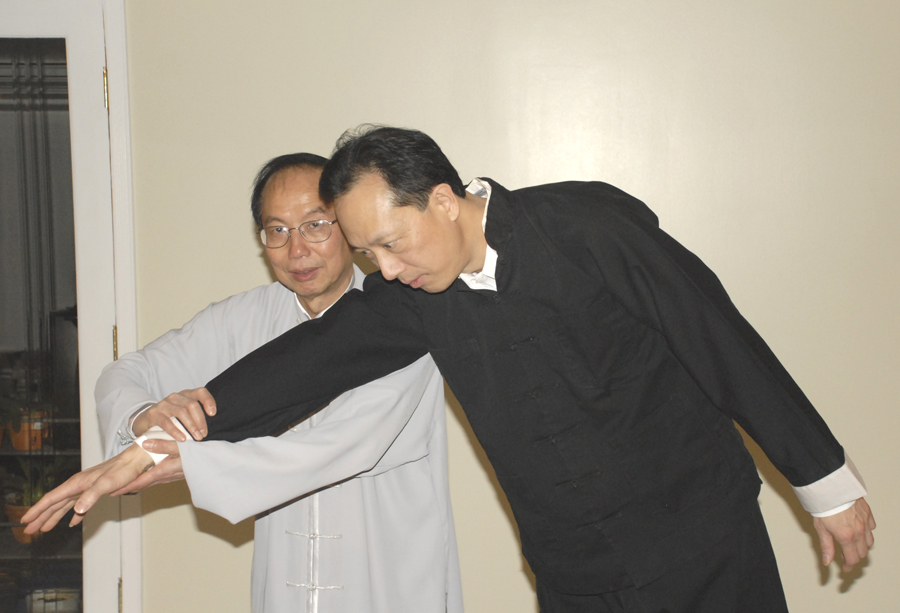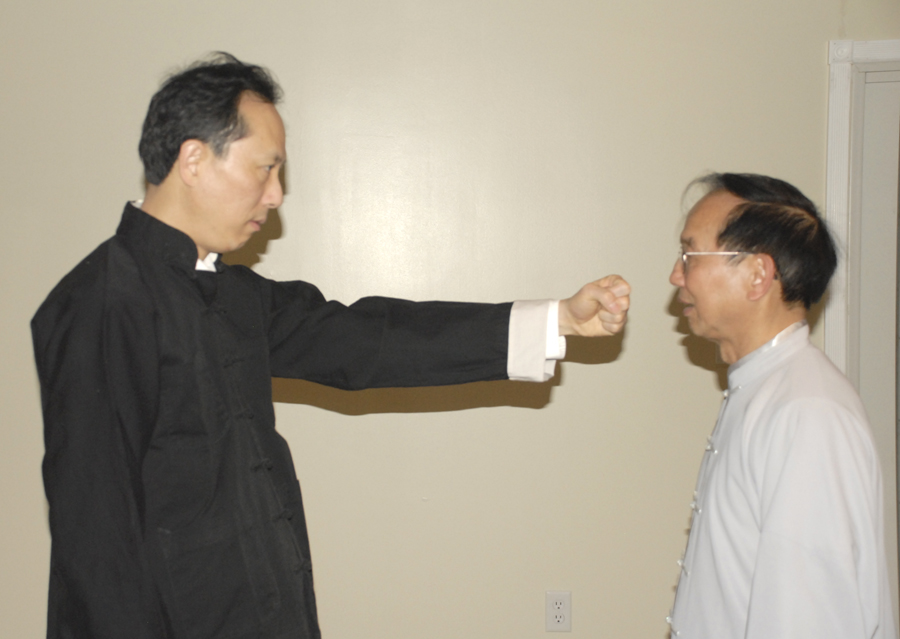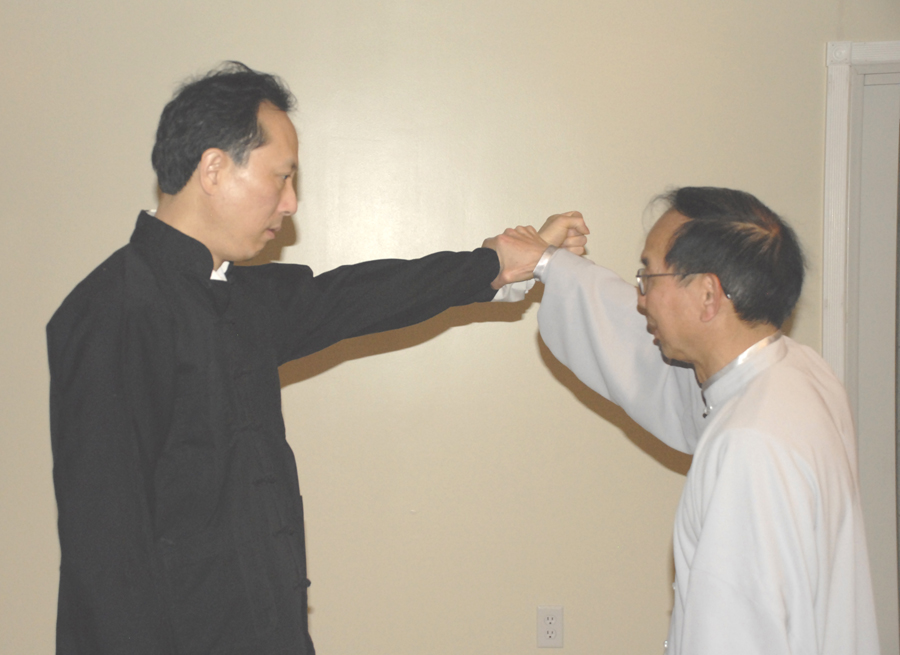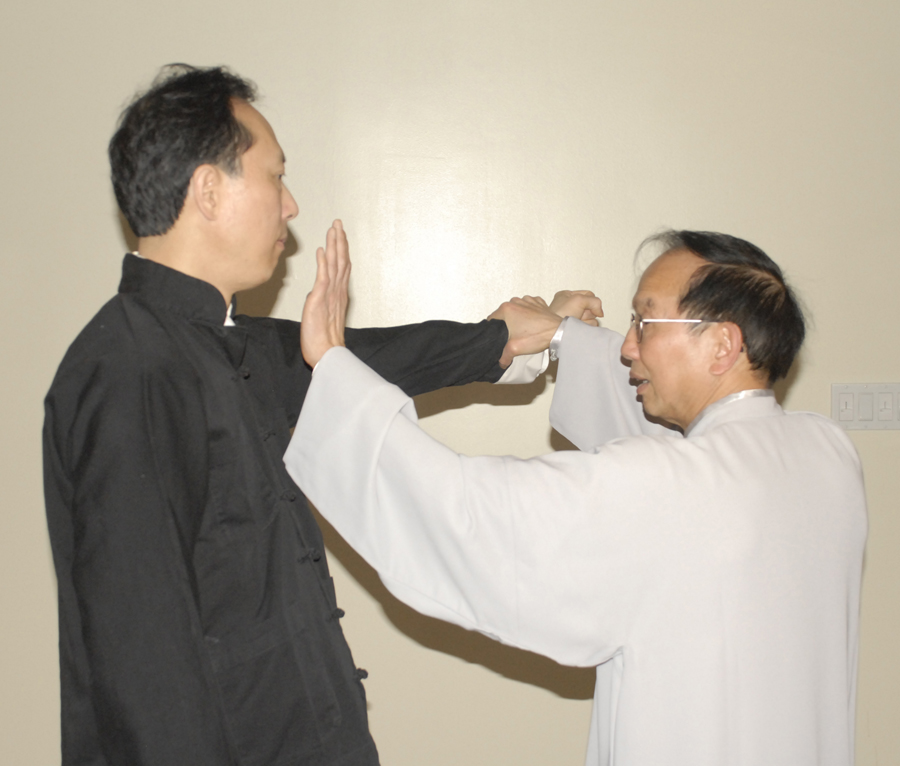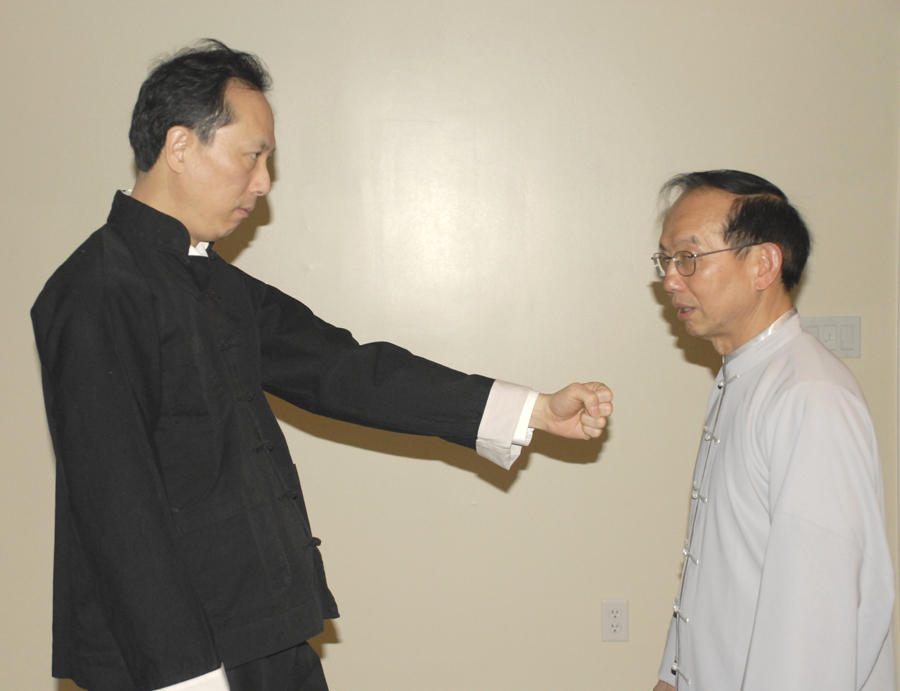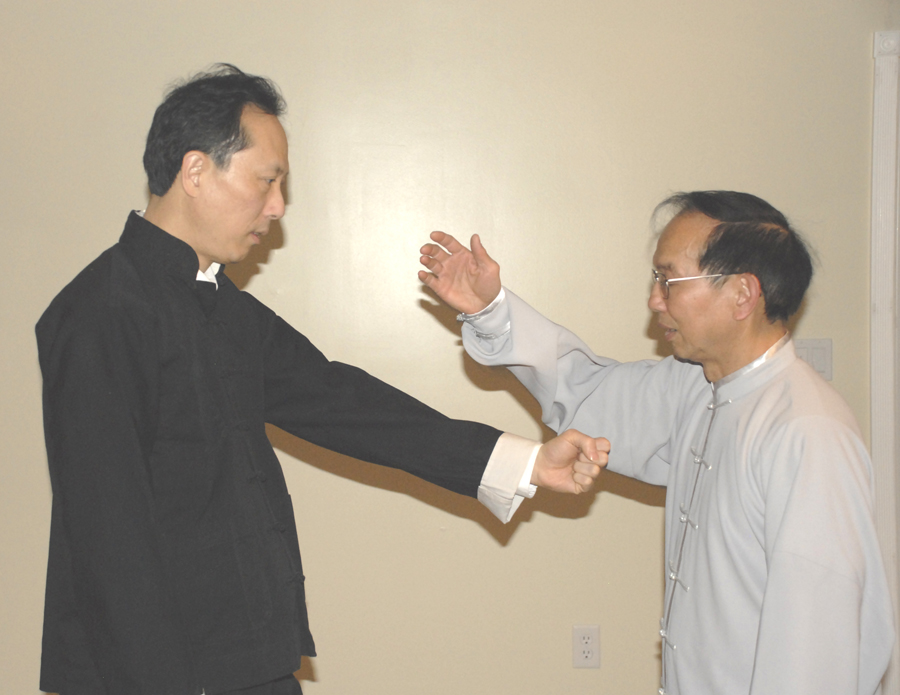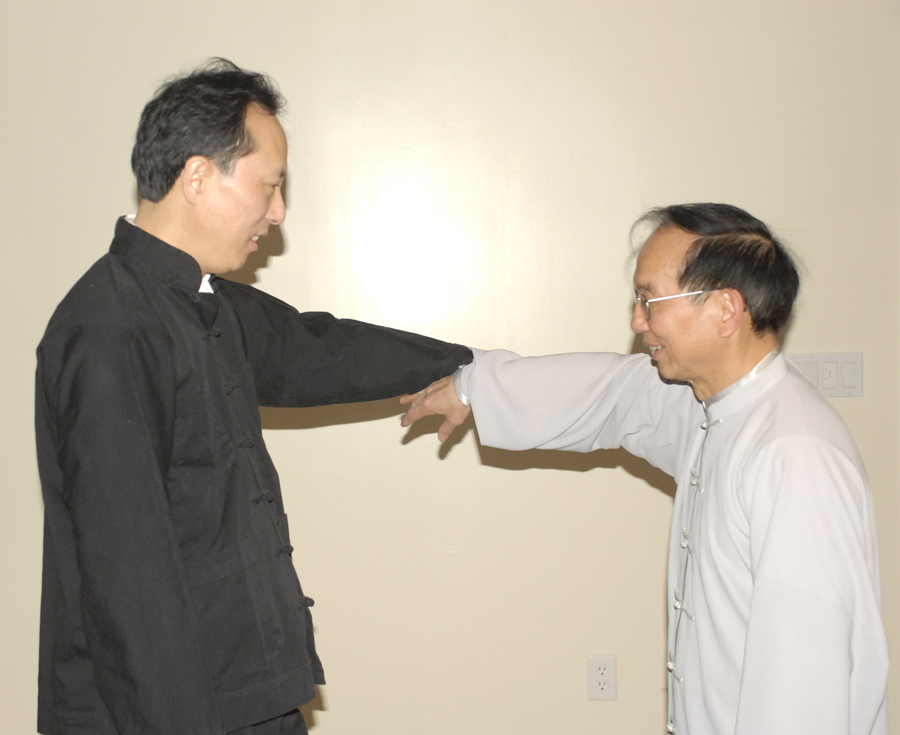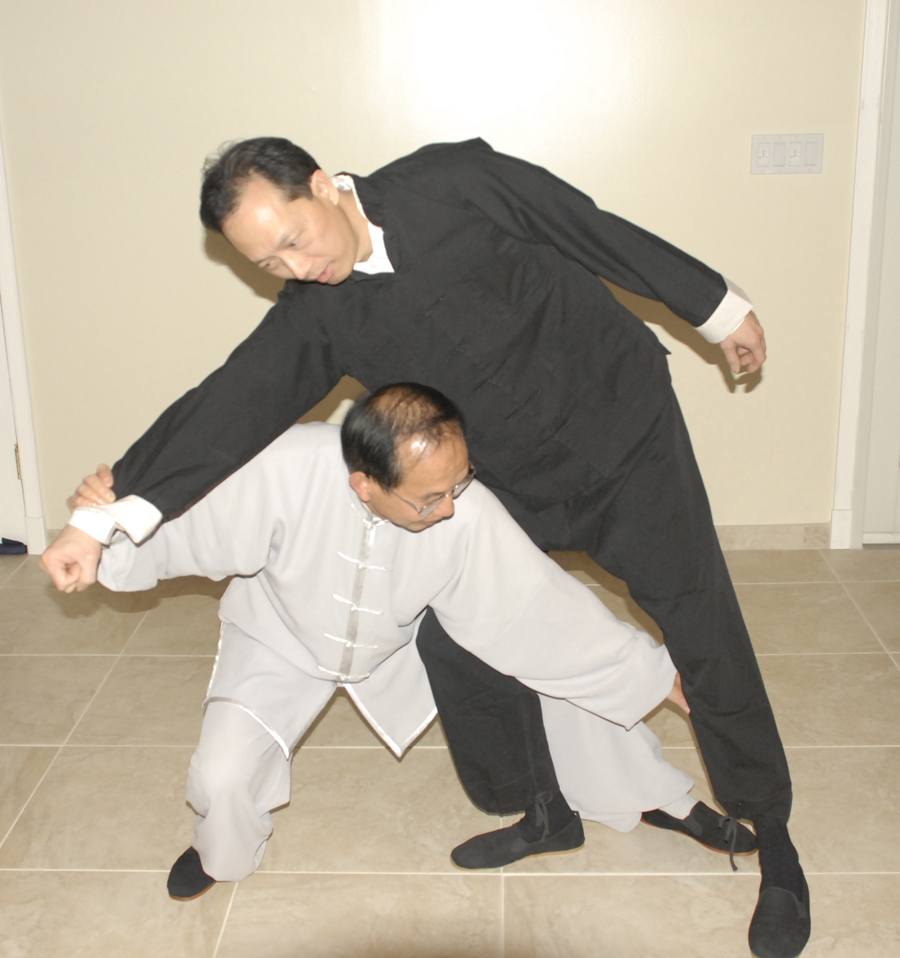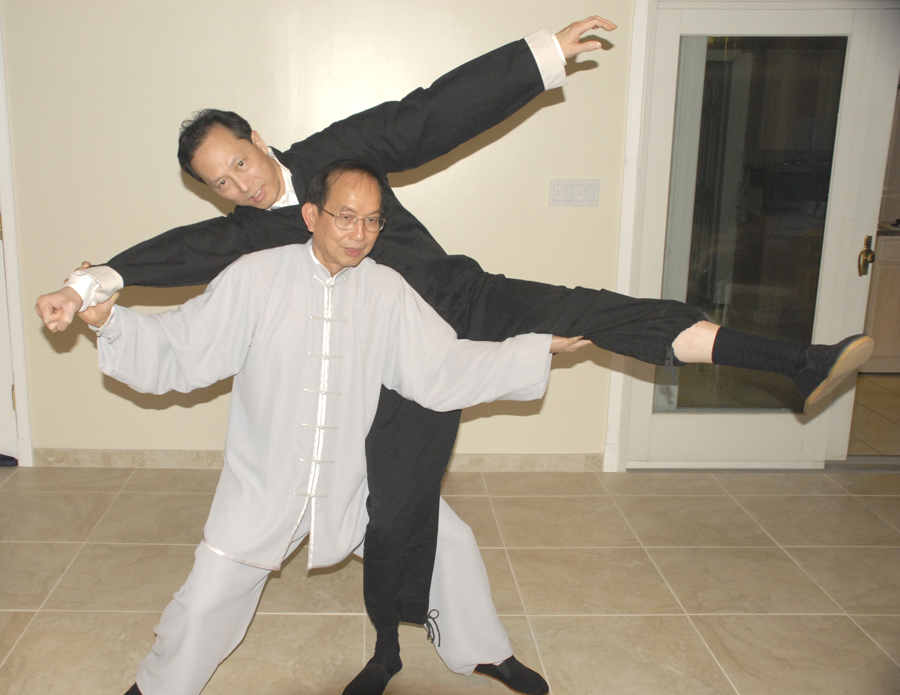
Martial
Applications of Taijiquan
2008-12-R14
Martial
Applications of Taijiquan
2008-12-R14
(Copyrighted 2008 by Don M. Tow)
Although Taijiquan is better known in the West as an excellent exercise that is very beneficial for health, especially for adults and senior citizens, Taijiquan was invented several hundred years ago as a martial art. It is still an excellent martial art. It emphasizes deflection, redirection of opponent's force, utilization of opponent's motion to get him off balance, strategic placement of body parts, and softness to overcome hardness. Advanced Taijiquan experts also use Qigong to increase their striking power and increase their capacity to absorb strikes.
In this article we discuss several basic martial applications of Taijiquan. We take several forms from the "Simplified Yang Style 24 Form," which is often the first Taiji form set that is taught in an introductory course to Taijiquan. Even though these are forms from an introductory course, they can already illustrate the martial power of Taijiquan. For each form, there are multiple martial applications. In this article, we show only one or two martial applications for each form.
For illustration purposes, we have chosen the following eight forms:
- Opening Form
In the following, we will denote the two people in the illustration photos by A and B. Person A (in black) is the attacking person, and person B (in light gray) is the person using Taiji to counter A's attack. For each photo, you can click on the photo to get a larger-size photo. Then to return to the previous page, just click on the back-arrow button on your browser.
Opening Form
Application A: Attack from behind
Application B: Attack from front
| 1. Person A grasps B's neck or chest from front |
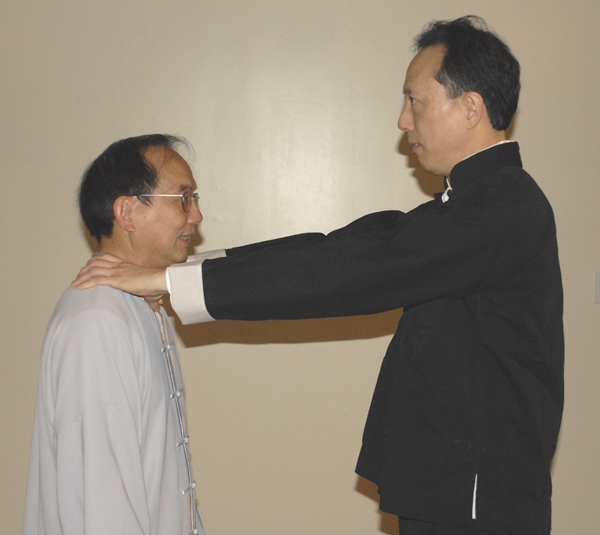 |
2. B raises both arms upward to break A's hold around his neck or chest |
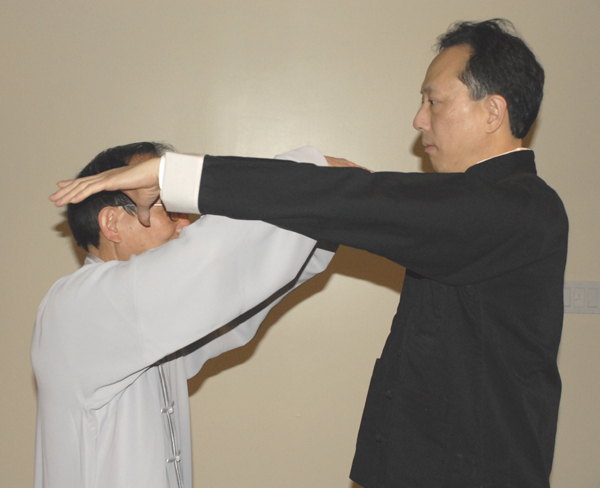 |
| 3. B drops both elbows and then pushes A's chest with both arms, while stepping forward |
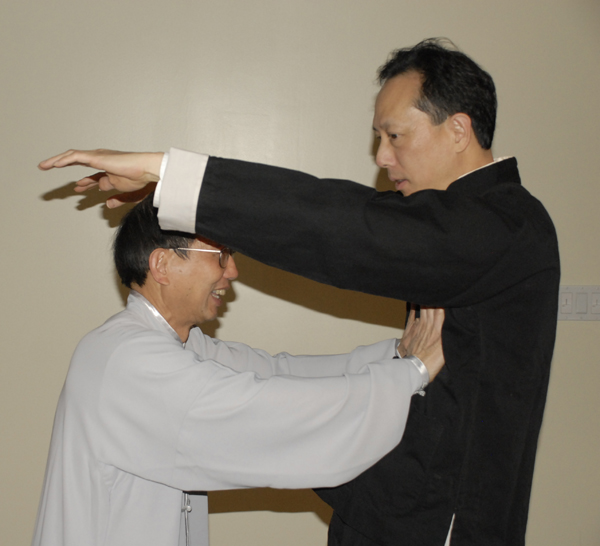 |
Wild Horse Shakes Its Mane
This form illustrates clearly the fundamental characteristics of Taijiquan which is captured by the Taiji symbol (see also the article "Yin-Yang Theory and Martial Applications of Tajiquan" in the Archived-Taiji page):
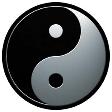
The fundamental characteristics are:
-
B does not counter A's attack with a direct frontal counter attack. Instead, B complements A's motion by pulling A in the direction that he is already moving.
-
When A changes direction, B also changes direction and now complements A's motion in the opposite direction by pressing A in that direction.
Step Back and Repulse the Monkey
Application A:
Application B:
Roll Back Component of Grasp the Sparrow's Tail
Single Whip
Wave Hands Like Clouds
Application A: Blocking Punch from Above
Application B: Blocking Punch from Below
| 1. Person A tries to attack B with a punch using his left fist |
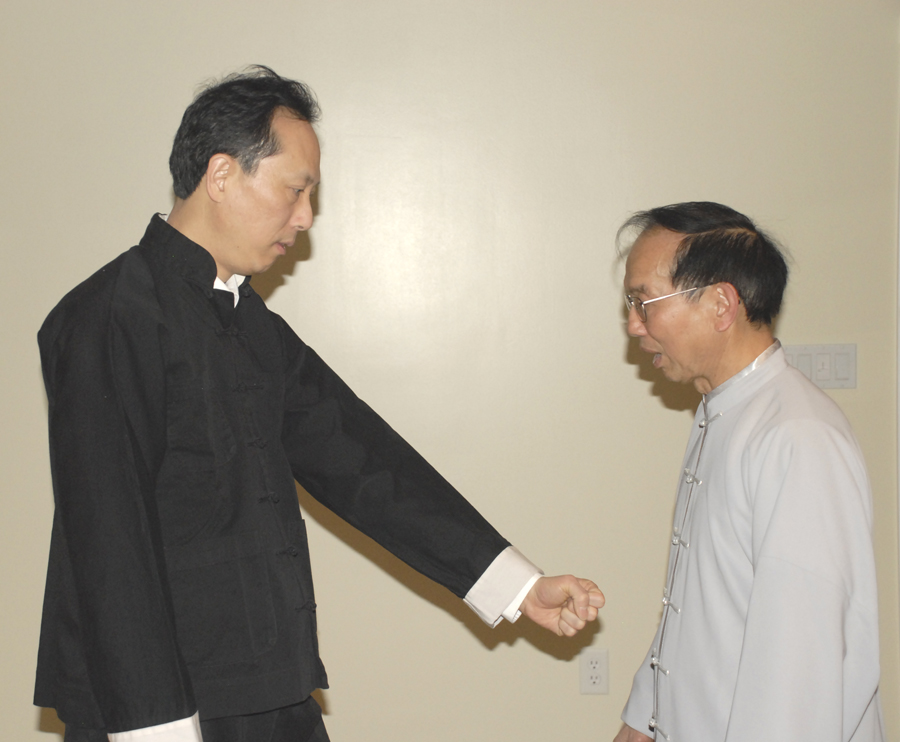 |
2. B blocks punch waving right hand from below in a clockwise direction |
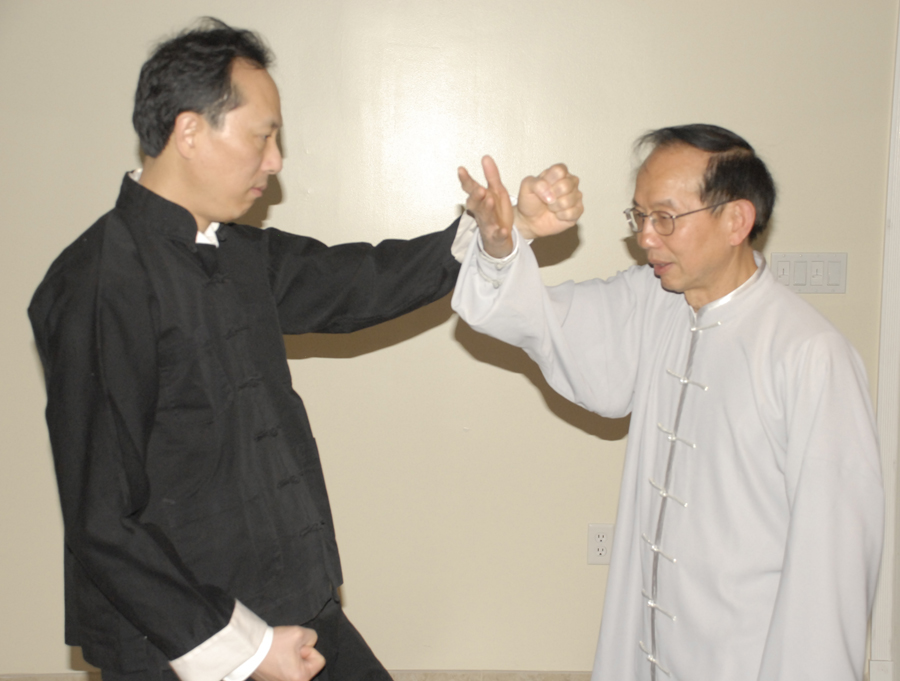 |
Application C: Blocking Kick from Below
| 1. Person A tries to attack B with a front kick |
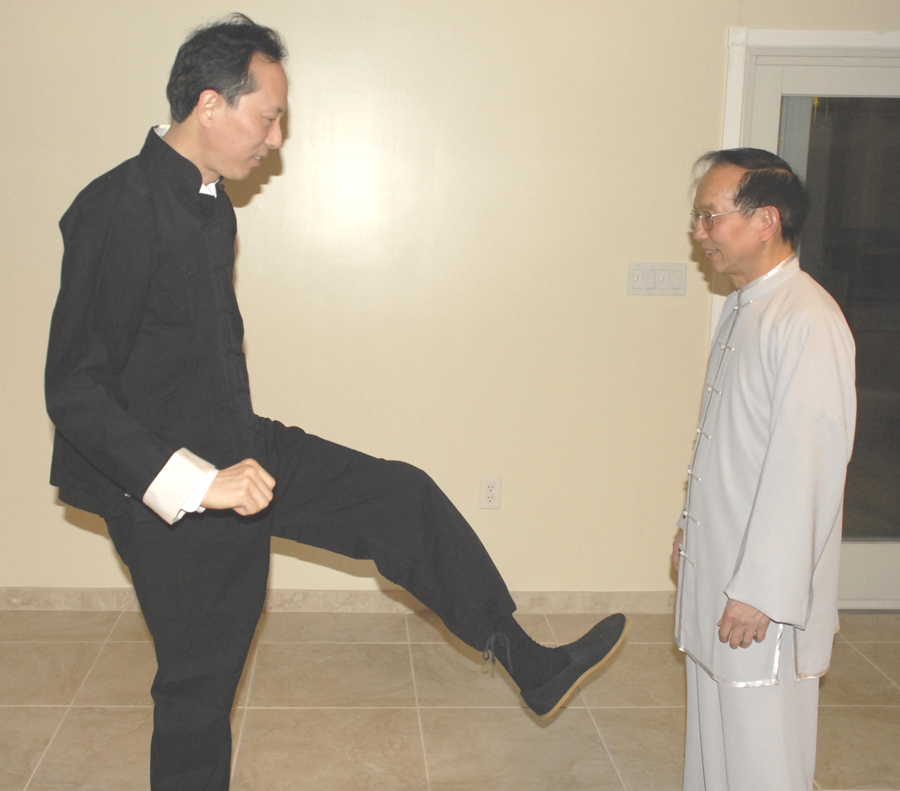 |
2. B blocks kick waving right hand from below in a clockwise direction |
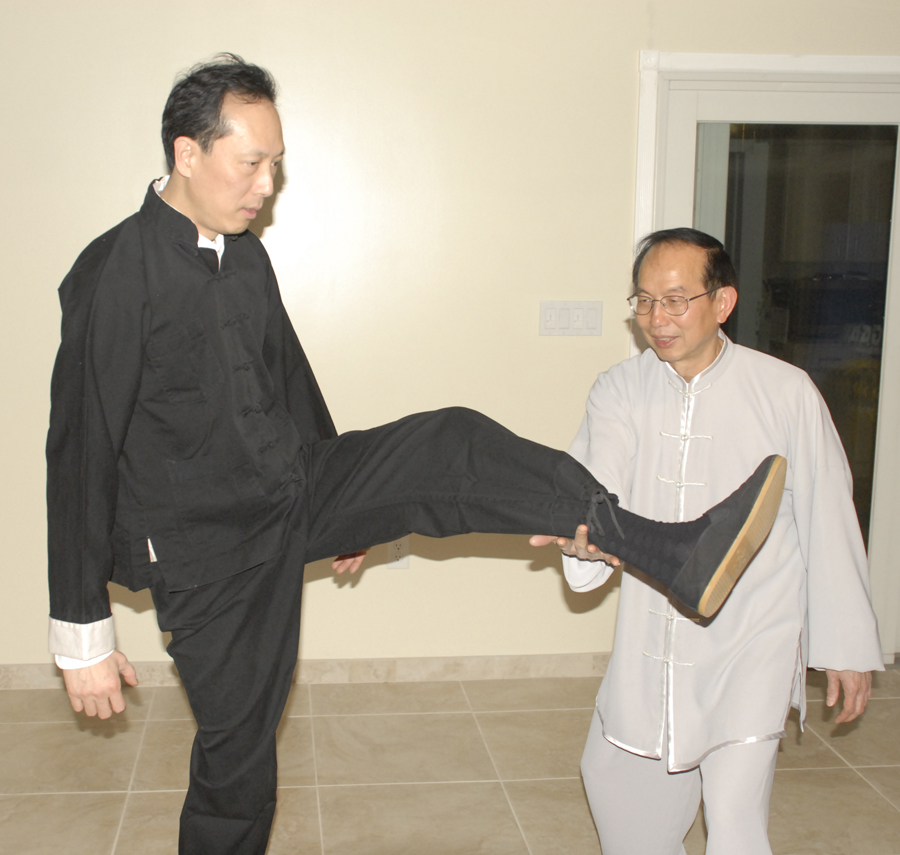 |
Push Down and Stand on One Leg
Application A:
| 1. Person A tries to punch B's head with his right fist |
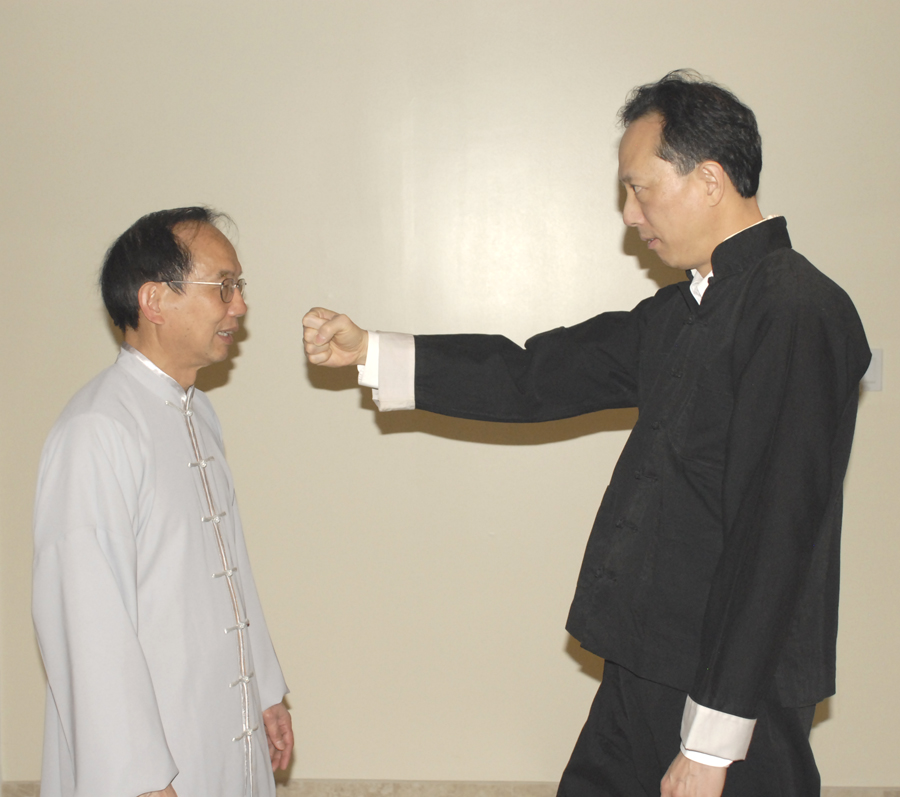 |
2. B raises right hand to block punch and then turns his right hand to grasp A's right wrist, and turns body slightly to right |
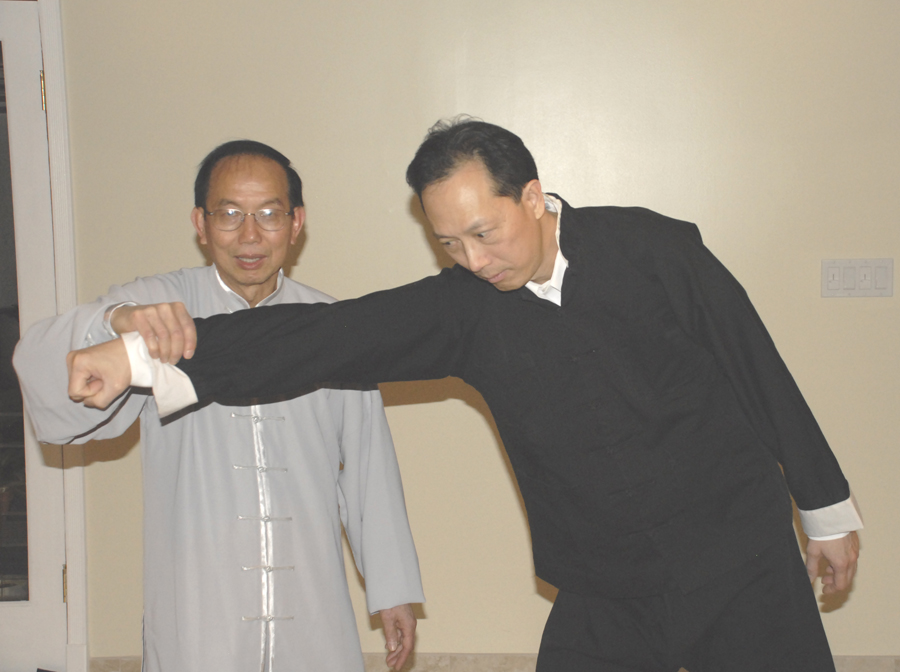 |
Application B:
| 1. Person A tries to punch B's head with his right fist. |
 |
2. B raises right hand to block punch and then turns his right hand to grasp A's right wrist |
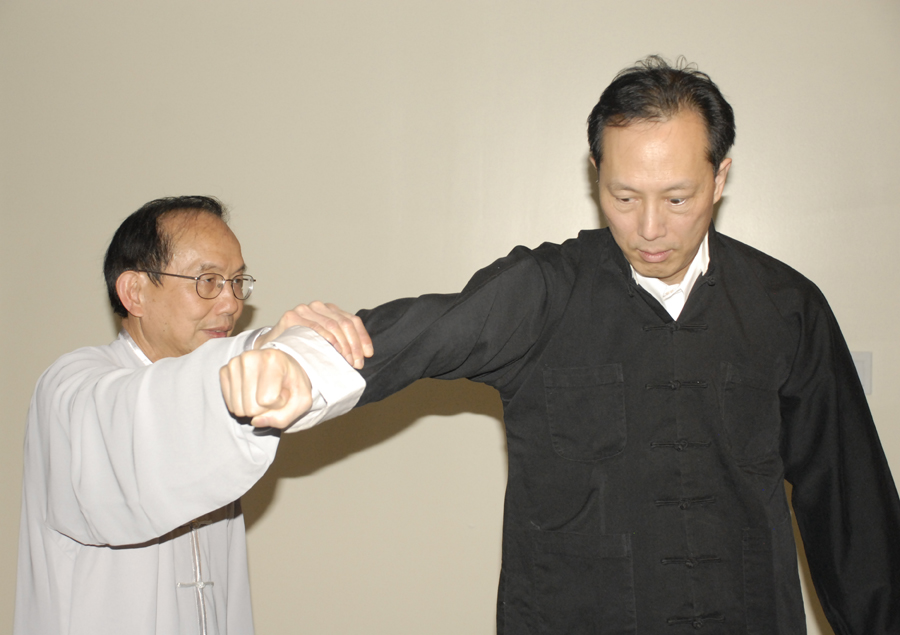 |
| 3. B steps forward with his left foot, and raises his right knee to hit A's right rib cage | (no photo - to be provided in the future) |
Picking Up Needle from Bottom of Ocean
| 1. Person A tries to punch B's head with his right fist |
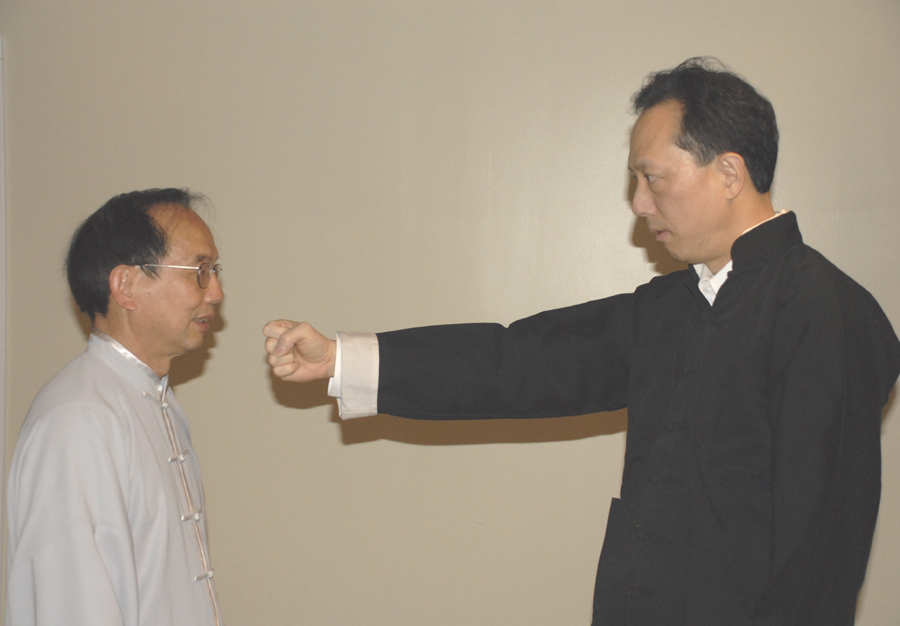 |
2. B raises his right hand to block punch and then turns his right hand to grasp A's right wrist |
 |
| 3. B presses his left hand downward on the back of A's upper right arm (or just below A's right shoulder), thus dropping A to the floor |
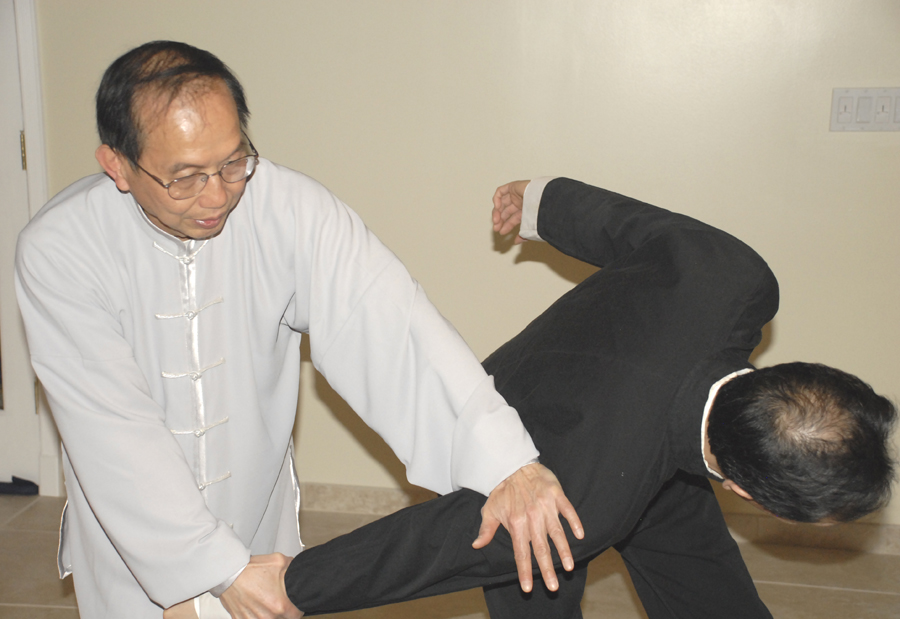 |
I want to thank Albert Chan and Henry Hom for collaborating on this project. Albert was the other performer in the photos, and Henry was the photographer.
-------------------------------------------------------------------------------
Comments (or questions) from readers are welcome. Please specify whether you want to share your comments with only the author of this website or with the other readers. If it is the latter, your comments will be posted in the appropriate "Comments" page. Please send them via an email to [email protected].
